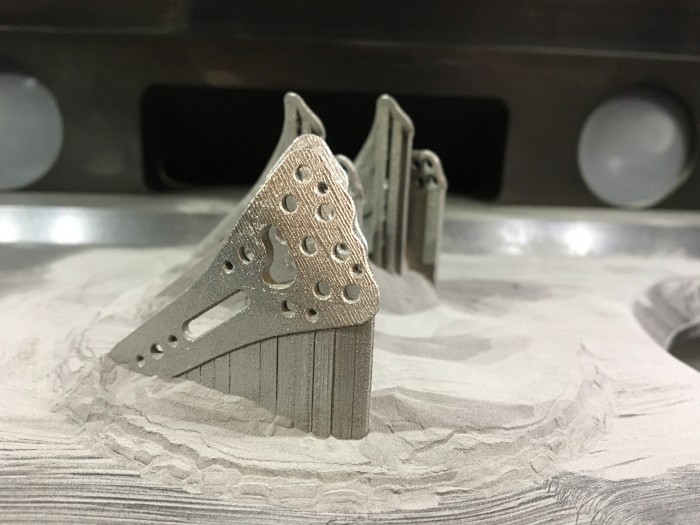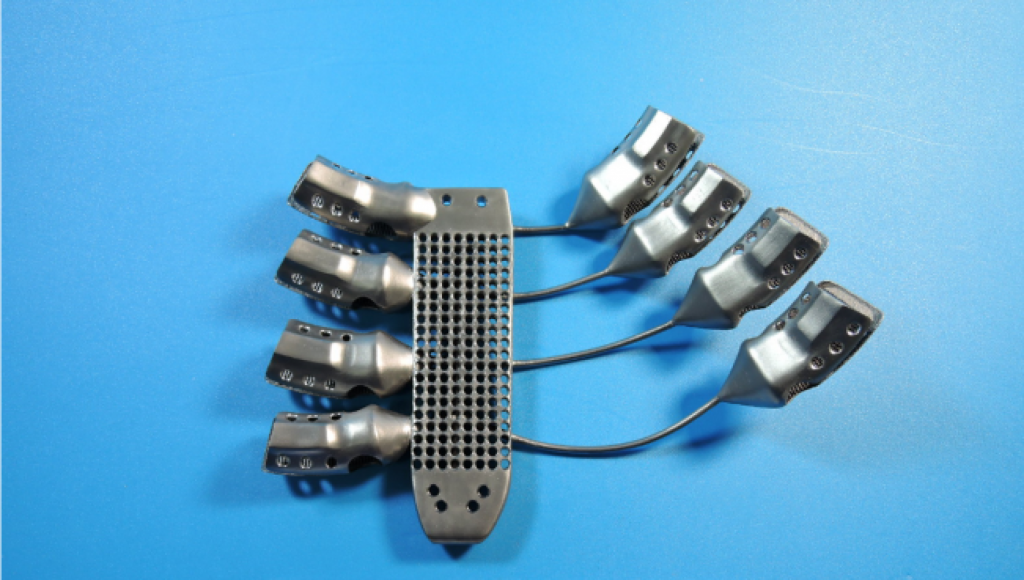Heraeus Amloy, a metallurgy specialist, is working with the University of Graz to 3D print novel medical devices made of amorphous metals.
Conducted as part of the Clinical Additive Manufacturing for Medical Applications (CAMed) project, the research will see the partners developing and testing new alloy powders for end-use implants and prostheses. The new 3D printed devices are expected to deliver significant performance improvements over existing ones made of steel or titanium, owing to the extraordinary mechanical properties of amorphous alloys.
Jürgen Wachter, Head of Heraeus Amloy, states, “As part of the CAMed project, we are currently testing the AMLOY-ZR02 alloy. Its main component is high-purity zirconium and it has already been certified as biocompatible.”

The limitations of conventional medical implants
To date, most metal-based medical implants have been made of either stainless steel, cobalt-chrome, or titanium. While these alloys work for the most part, they often have trouble molding to the ever-changing forces in the body of a patient, even if they have been custom 3D printed.
Take, for example, a titanium rib arch, which is forced to withstand approximately eight million breathing motions every year. Body-temperature titanium isn’t all that elastic as far as materials go, so the implant may have difficulty settling into a patient’s chest cavity if it isn’t fixed to the surrounding bones in an optimal manner. While each breathing cycle exerts a minimal force, the sheer number of cycles can eventually lead to a fatigue fracture, especially over an extended period of time.

How can amorphous metals help?
An amorphous metal, or metallic glass, is formed by shock-freezing a metallic melt pool, meaning the atoms in the material aren’t given enough time to form a crystalline lattice structure. Instead, the atoms solidify in an irregular and disordered (amorphous) structure akin to that of glass. This gives the resulting alloy an excellent set of physical properties, including corrosion-resistance, great strength characteristics, and high elasticity. It is this combination of strength and elasticity that makes the material class so suitable for permanent load applications like medical implants.
The Heraeus project ultimately aims to improve the processability of these amorphous metals so they can be 3D printed on most industrial laser powder bed fusion systems. By 3D printing the implants, medical professionals will be able to create next-generation patient-specific devices adapted to the physique of each individual wearer. This is expected to come in particularly handy when dealing with injuries from accidents and tumor removals, as implant placement can be a complex procedure following these events.
Valeska Melde, Head of Marketing & Sales at Heraeus Amloy, concludes, “Amorphous metals have a number of advantages over steel and titanium: This material combines the benefits of strength and elasticity. It adapts perfectly to the bone, promotes recovery and is also very well tolerated, as it can be implanted without cell deformation.”
Although the company has been out of the spotlight for a while, Heraeus is known for producing the world’s largest 3D printed amorphous metal component. The gear wheel, printed in 2019, is made of the company’s proprietary AMZ4 metal powder and has a diameter of 110mm.
More recently, Heraeus also partnered with machine tool manufacturer TRUMPF to advance the use of 3D printed amorphous parts for engineering applications. By improving the cost efficiency of the material when 3D printed, the partners aimed to establish the additive manufacturing of amorphous metal parts as a standard production method on the shop floor.
Subscribe to the 3D Printing Industry newsletter for the latest news in additive manufacturing. You can also stay connected by following us on Twitter and liking us on Facebook.
Looking for a career in additive manufacturing? Visit 3D Printing Jobs for a selection of roles in the industry.
Featured image shows a set of 3D printed radius plate implants made of an amorphous metal. Photo via Heraeus.


